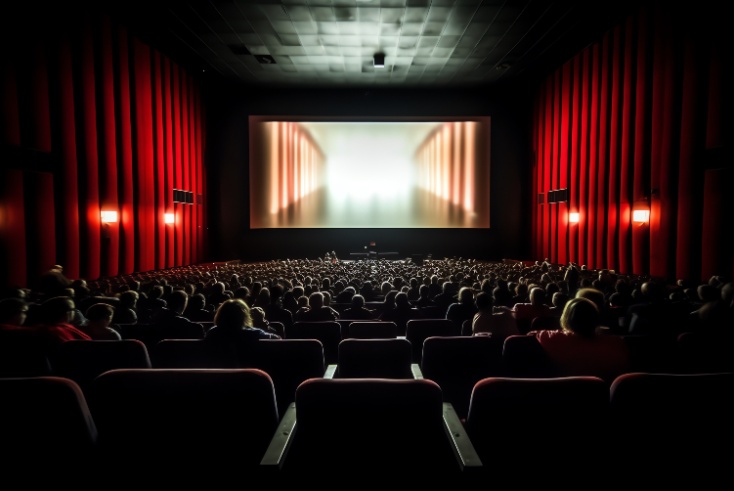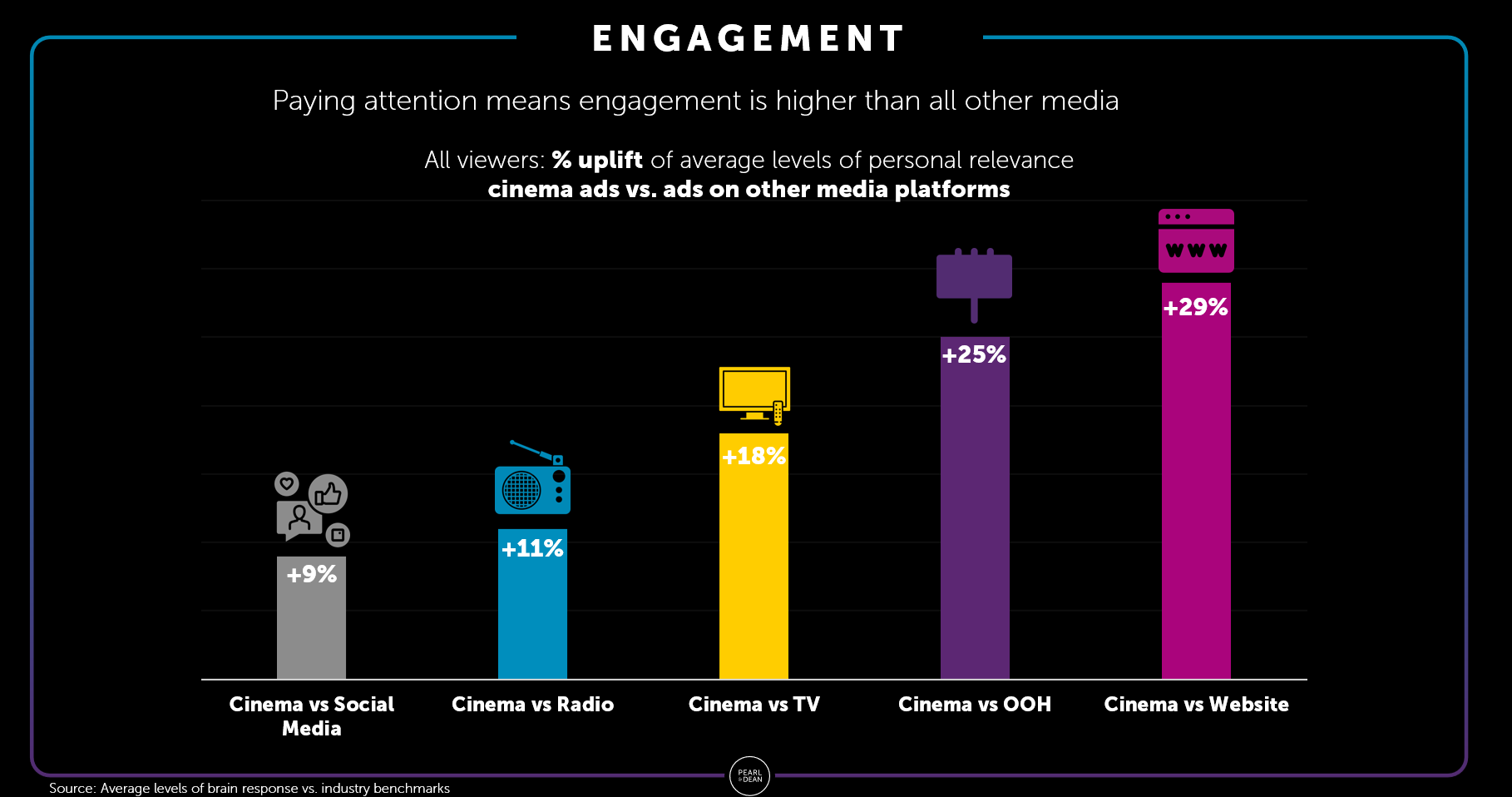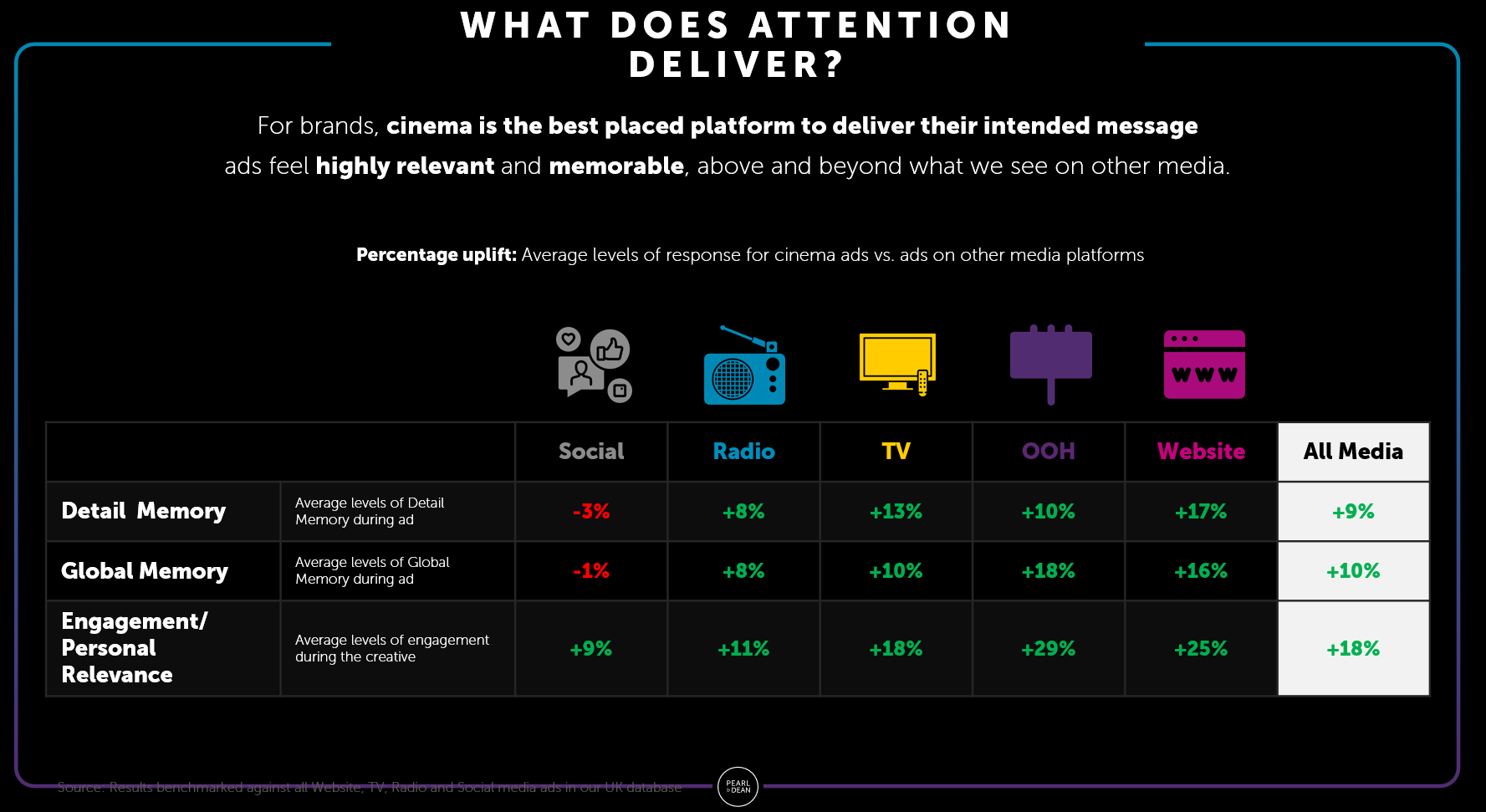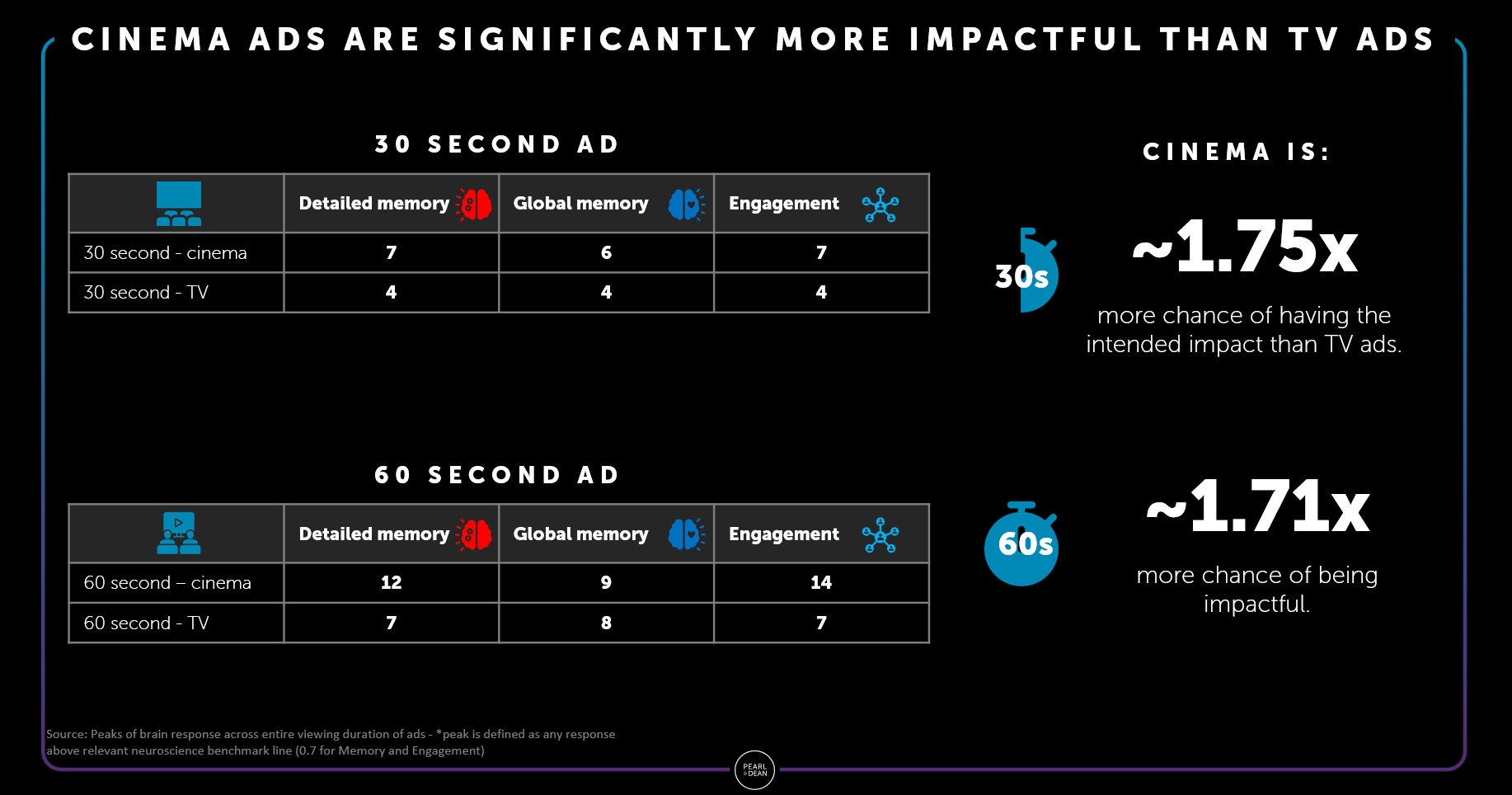Neuroscience explains why cinema ads are ‘significantly’ more impactful and memorable

Cinema ads have consistently higher levels of memory and personal engagement than other mediums, a new study has found.
The study, commissioned by cinema advertising saleshouse Pearl & Dean and conducted by research agency NeuroInsight, sought to understand how the brain reacts to what it sees in the cinema as compared to other media.
It examined four neuro responses on a second-by-second basis.
Ads feel ‘more personally relevant’
“Detail memory”, or left brain, relates to how people remember brands, key messages, calls to action, and ad creative, while “global memory”, or right brain, influences more “big picture” holistic processing.
“Engagement” referred to how personally relevant participants found the content, whereas “approach/withdraw” links to “the lean in/lean out emotional direction” to the content they were exposed to.
An audience (expecting to see a film) were set up in a cinema environment with headsets to monitor brain activity, and exposed to 30 minutes of cinema content, including ads and trailers. Groups of respondents were shown different ad reels to protect against creative bias.
Cinema was found to increase brain activity from the standard brain response in all of four measured neuroscience areas; +2% for approach/withdrawal, +14% for detail memory, +16% for personal relevance and +21% for global memory.
This indicated cinema ads felt more personally relevant to viewers and were being “strongly encoded” into subconscious memory, improving the chances for a viewer to recall ad messaging, brand, emotion and creative.
Higher engagement
In terms of engagement, the study found cinema is “particularly strong” at creating personal relevance compared to other media channels. These comparisons are based on a bank of NeuroInsight research for different channels.
Radio and social were the closest to cinema in terms of personal relevance or engagement, with cinema recording a +11% and +9% average uplift against each.
This was seen to be down to the nature of these two as more “intimate” mediums, and with social having specifically curated content for individuals.

Higher memorability
Looking at averages over all media, cinema exceeds the average levels of response for detail memory by 9%, global memory by 18% and by eliciting personal relevance or engagement again by 18%.
Compared to individual media channels, cinema tends to perform better across detail memory, global memory and engagement/personal relevance, apart from for social and the memory parts of the brain, which could be due to its content being “highly targeted” for individuals.

Cinema versus TV ads
NeuroInsight also compared the effect of different lengths of cinema and TV ads on memory and engagement using data from its previous studies with an average of more than 885 TV spots.
A 30-second cinema ad had 1.75 times more chance of having its “intended impact” on memory and engagement than a 30-second TV ad. And for the 60-second time length, cinema was found to have 1.71 times more chance of impact on these two elements than TV.
For ads of both time lengths, TV provoked “fewer numbers of peaks of response” for memory and engagement throughout than cinema.
A peak was defined as any response higher than NeuroInsight’s benchmark of 0.7, which is the threshold to be encoded in subconscious memory.
Multiple peaks of memory and engagement throughout viewing are more likely to build new and personally relevant long-term brand associations.





